- europages
- >
- COMPANIES - SUPPLIERS - SERVICE PROVIDERS
- >
- energy technology
Results for
Energy technology - Import export

SCHMIDT ZERSPANUNGSTECHNIK
Germany
SCHMIDT Zerspanungstechnik manufactures machines for many different industry sectors With our high-precision machinery and qualified employees, we fabricate custom machinery and plant equipment individually tailored to the needs of the particular industry. We act as dialogue and development partner for industry in the field of mechanical and plant engineering, and our service portfolio encompasses everything from consultancy and development work and implementing precisely tailored solutions to on-time assembly and installation on site. We design and develop machinery and plant equipment for our customers that need to meet very stringent requirements. SCHMIDT Zerspanungstechnik has a very high degree of vertical integration - something that has resulted in us becoming system partner in many branches of industry. We construct machinery and plant equipment for the following branches of industry: Steel processing Automotive Defence engineering Energy technology
Request for a quote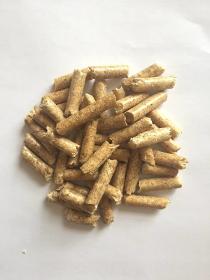
SIA BROCENI PELLETS
Latvia
The majority of consumption was aimed at the production of heat, which represents 61.8%. The consumption of heat pellets can be further divided into three markets – household heating (69%), commercial heating (19%) and heat produced from CHP (12%). The remaining 38.2% of wood pellets were used for energy production. It should be noted that pellet energy generation technologies for heat, electricity or both are mature and offer efficient and reliable processes. Wooden pallets.
Request for a quote
SIA BROCENI PELLETS
Latvia
The majority of consumption went to heat production, which represented 61.8%. Pellet consumption for heat can further be divided into three markets – residential heating (69%), commercial heating (19%) and heat generated from cogeneration (12%). The remaining 38.2% of wood pellets were used for power generation. It should be noted that the technologies for producing energy from pellets for heat, electricity or both are mature and offer efficient and reliable processes. Three pellets
Request for a quote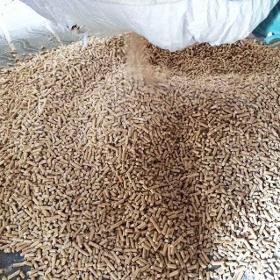
SIA BROCENI PELLETS
Latvia
Most of the consumption was for heat production, accounting for 61.8%. Pellet consumption for heating can be further divided into three markets – residential heating (69%), commercial heating (19%) and heat generated by CHP (12%). The remaining 38.2% of wood pellets were used to generate electricity. It should be noted that technologies for producing energy from pellets for heating, electricity, or both are mature, offering efficient and reliable processes.
Request for a quote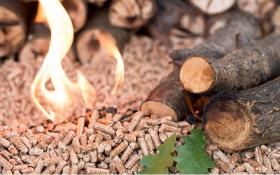
SIA BROCENI PELLETS
Latvia
Wood pellet consumption in Europe: Most of the consumption was for heat production, accounting for 61.8%. The use of pellets for heat can be further broken down into three markets – residential heating (69%), commercial heating (19%) and CHP heat (12%). The remaining 38.2% of the wood pellets were used for energy production. It should be noted that technologies for generating energy from pellets for heat, electricity or both are mature, offering efficient and reliable processes.
Request for a quote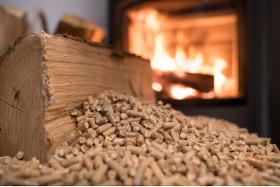
SIA BROCENI PELLETS
Latvia
Most of the consumption was destined to the production of heat, which represents 61.8%. The consumption of pellets for heat can be divided into three markets: residential heating (69%), commercial heating (19%) and heat generated from CHP (12%). The remaining 38.2% of wood pellets was used for energy production. It should be noted that technologies to produce energy from pellets for heat, electricity, or both, are mature and offer efficient and reliable processes. Wood pellets A1.
Request for a quote
SIA BROCENI PELLETS
Latvia
The majority of consumption went to heat production, accounting for 61.8%. The consumption of pellets for heating can be divided into three markets: residential heating (69%), commercial heating (19%) and heat produced from cogeneration (12%). The remaining 38.2% of wood pellets were used for power generation. It should be noted that technologies to generate energy from pellets for heating, electricity or both are well established and offer efficient and reliable processes.
Request for a quote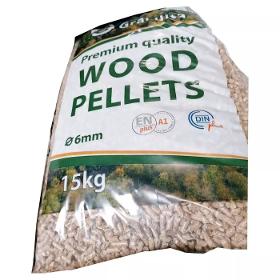
SIA BROCENI PELLETS
Latvia
Most of the consumption went to heat production, accounting for 61.8%. Pellet fuel consumption for heat production can be divided into three markets – residential heating (69%), commercial heating (19%) and heat produced by cogeneration (12%). The remaining 38.2% of wood pellets were used for electricity production. It should be noted that technologies for energy production from pellets for heat, electricity or both are mature, providing efficient and reliable processes. Wood pellets 6mm
Request for a quote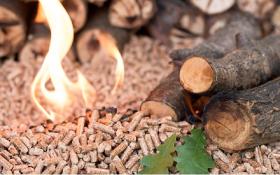
SIA BROCENI PELLETS
Latvia
Most of the consumption is for heat production – 61.8%. The consumption of pellets for heat can be further divided into three markets – residential heating (69%), commercial heating (19%) and heat produced from cogeneration energy (12%). The remaining 38.2% of wood pellets were used for energy production. It should be noted that technologies for energy production from pellets for heat, electricity or both are mature and offer efficient and reliable processes. Buy wood pellets 6mm.
Request for a quote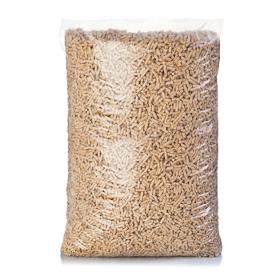
SIA BROCENI PELLETS
Latvia
Most of the consumption was for heat production, accounting for 61.8%. The consumption of pellets for heat can be divided into three markets – domestic heating (69%), commercial heating (19%) and heat produced by CHP (12%). The remaining 38.2% of wood pellets were used to generate electricity. It should be noted that technologies for energy production from pellets for heat, electricity or both are mature, offering efficient and reliable processes. Wood pellets
Request for a quote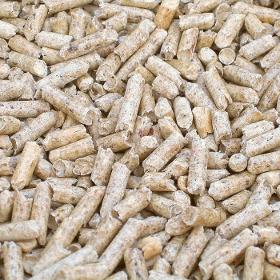
SIA BROCENI PELLETS
Latvia
consumption : The majority of consumption, 61.8%, was for heat generation. Pellet consumption for heating can be further subdivided into three markets: residential heating (69%), commercial heating (19%) and CHP heating (12%). The remaining 38.2% of the wood pellets were used to generate electricity. It should be noted that the technologies for generating energy from pellets for heat, electricity or both are mature and offer efficient and reliable processes.
Request for a quote
SIA BROCENI PELLETS
Latvia
Most of the consumption was directed to the production of heat energy, accounting for 61.8%. The consumption of pellets for heat energy can be divided into three markets – residential heating (69%), commercial heating (19%) and heat generated by cogeneration (12%). The remaining 38.2% of wood pellets were used for energy production. It should be noted that technologies for energy production from pellets for heat, electricity or both are mature, offering efficient and reliable processes. Order wood pellets 6mm.
Request for a quote
HERBERHOLZ GMBH
Germany
Applications: Industrial Combustion Technology / Renewable Energy Technology / Environmental Technology / Industrial Furnaces One-piece body, centric disc Operating temperatures up to 620°C, depending on material selection Wafer type body for flanges according to DIN EN 1092-1 or ASME B16.5 / ASME B16.47 Face-to-face length according to manufacturer’s standard Mounting flange for actuators according to DIN EN ISO 5211
Request for a quote
HERBERHOLZ GMBH
Germany
Applications: Industrial Combustion Technology / Renewable Energy Technology / Environmental Technology / Industrial Furnaces One-piece body, centric disc Operating temperatures up to 800°C, depending on material selection Wafer type body for flanges according to DIN EN 1092-1 or ASME B16.5 / ASME B16.47 Face-to-face length according to manufacturer’s standard Mounting flange for actuators according to DIN EN ISO 5211 Inspection according to DIN EN 12266
Request for a quote
HERBERHOLZ GMBH
Germany
Applications: Environmental Technology / Mechanical and Plant Engineering / Renewable Energy Technology One-piece body, centric disc Also available as multi-blade version Operating temperatures up to 900°C, depending on material selection Flanged body according to DIN 24193 or customer specification Face-to-face length according to manufacturer’s standard or individual customer specifications Mounting flange for actuators according to DIN EN ISO 5211 Inspection according to DIN EN 12266
Request for a quote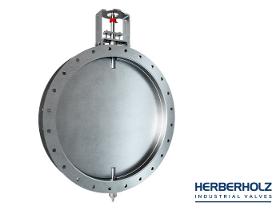
HERBERHOLZ GMBH
Germany
Applications: Mechanical and Plant Engineering / Renewable Energy Technology / Shipbuilding One-piece body, centric disc Operating temperatures up to 800°C, depending on material selection Wafer type body for flanges according to DIN EN 1092-1 or ASME B16.5 / ASME B16.47 Face-to-face length according to manufacturer’s standard or individual customer specifications Mounting flange for actuators according to DIN EN ISO 5211 Inspection according to DIN EN 12266
Request for a quote
HERBERHOLZ GMBH
Germany
Applications: Steel Industry / Industrial Combustion Technology / Renewable Energy Technology One-piece body, tight-closing, centric disc Design for mounting between flanges according to DIN EN 1092-1 or ASME B16.5 Face-to-face length according to DIN EN 558-1-R20. Leakage rate A according to DIN EN 12266-1. permissible operating pressure 5 bar For all gases according to DVGW worksheet G 260 Safety shut-off valve according to EN161 class A (closing time < 1s)
Request for a quoteDo you sell or make similar products?
Sign up to europages and have your products listed
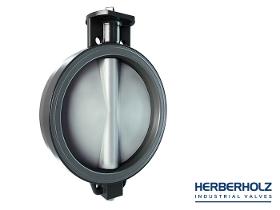
HERBERHOLZ GMBH
Germany
Applications: Steel Industry / Industrial Combustion Technology / Renewable Energy Technology One-piece body, tight-closing, centric disc With blow-out proof shaft Design for mounting between flanges according to DIN EN 1092-1 Face-to-face length according to DIN EN 558-1-R20 Leakage rate A according to DIN EN 12266-1 permissible operating pressure 10 bar, from DN 350 ≤ 1.5 bar For all flammable gases according to EN 437 and other neutral gases Approval according to DIN EN IEC 61511, up to and including SIL 3
Request for a quote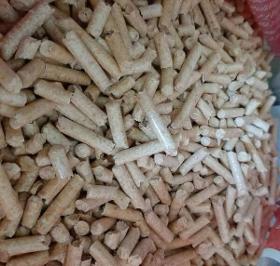
ESSELATE AB
Sweden
Wood pellet consumption in Europe: Most of the consumption was for heat production, accounting for 61.8%. The use of pellets for heat can be further broken down into three markets – residential heating (69%), commercial heating (19%) and CHP heat (12%). The remaining 38.2% of the wood pellets were used for energy production. It should be noted that technologies for generating energy from pellets for heat, electricity or both are mature, offering efficient and reliable processes.

ESSELATE AB
Sweden
European firewood consumption: Most of the consumption was for heat production, accounting for 61.8%. The consumption of pellets for heat can be divided into three markets – domestic heating (69%), commercial heating (19%) and heat produced by CHP (12%). The remaining 38.2% of wood pellets were used to generate electricity. It should be noted that technologies for energy production from pellets for heat, electricity or both are mature, offering efficient and reliable processes. Wood pellets

ESSELATE AB
Sweden
European Wood Pellet Consumption: The majority of consumption went to heat production, which represented 61.8%. Pellet consumption for heat can further be divided into three markets – residential heating (69%), commercial heating (19%) and heat generated from cogeneration (12%). The remaining 38.2% of wood pellets were used for power generation. It should be noted that the technologies for producing energy from pellets for heat, electricity or both are mature and offer efficient and reliable processes. Three pellets

ESSELATE AB
Sweden
The majority of the consumption went to heat production, representing 61,8%. Pellet consumption for heat can be further divided into three markets – residential heating (69%), commercial heating (19%) and heat generated from CHP (12%). The remaining 38,2% of wood pellets were used for power production. It should be noted that the technologies for producing energy out of pellets for heat, electricity or both, are mature, offering efficient and reliable processes.

ESSELATE AB
Sweden
European wood pellet consumption: Most of the consumption was directed to the production of heat energy, accounting for 61.8%. The consumption of pellets for heat energy can be divided into three markets – residential heating (69%), commercial heating (19%) and heat generated by cogeneration (12%). The remaining 38.2% of wood pellets were used for energy production. It should be noted that technologies for energy production from pellets for heat, electricity or both are mature, offering efficient and reliable processes. Order wood pellets 6mm.
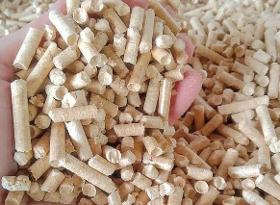
ESSELATE AB
Sweden
European wood pellet consumption : The majority of consumption, 61.8%, was for heat generation. Pellet consumption for heating can be further subdivided into three markets: residential heating (69%), commercial heating (19%) and CHP heating (12%). The remaining 38.2% of the wood pellets were used to generate electricity. It should be noted that the technologies for generating energy from pellets for heat, electricity or both are mature and offer efficient and reliable processes.

ECKARDT SYSTEMS GMBH
Germany
60 Series Our medium-sized felt roller lubricators are designed for coil gauges up to 2 mm as well as viscosities up to 120 mm 2/sec (recommended guideline values). Fields of application Tool making: components for milling/turning/grinding machines Expanding metals for use in energy technology, chemistry, medicine Stamped parts for household appliances
Request for a quote
ACE STOSSDÄMPFER GMBH
Germany
Self-Compensating, Piston Tube Technology Energy capacity 340 Nm/cycle Stroke 23.1 mm True performers: The combination the proven sealing technology from the MAGNUM series including membrane accumulator with the well-known piston tube technology from the SC² family makes the SC33 to 45 absorber models so strong and durable. The increase of the oil volume ensures the maximum braking forces. Short stroke lengths of 25 to 50 mm lead to shorter braking times in combination with a high energy absorption. These dampers safely and reliably decelerate rotary movements without unwanted recoil effects. Assembly close to the pivot point is possible. The low impact speeds with this are managed with ease by ACE's generation of piston tubes.
Request for a quote
ACE STOSSDÄMPFER GMBH
Germany
Self-Compensating, Piston Tube Technology Energy capacity 155 Nm/cycle Stroke 23.2 mm True performers: The combination the proven sealing technology from the MAGNUM series including membrane accumulator with the well-known piston tube technology from the SC² family makes the SC33 to 45 absorber models so strong and durable. The increase of the oil volume ensures the maximum braking forces. Short stroke lengths of 25 to 50 mm lead to shorter braking times in combination with a high energy absorption. These dampers safely and reliably decelerate rotary movements without unwanted recoil effects. Assembly close to the pivot point is possible. The low impact speeds with this are managed with ease by ACE's generation of piston tubes.
Request for a quote_FA_IMG_Single-01-cut-Labels_RGB-L_EN_55500bd5.jpg)
ACE STOSSDÄMPFER GMBH
Germany
Self-Compensating Energy capacity 1,870 Nm/cycle Stroke 48.6 mm Further possibilities of use: Just like all MAGNUM types from the product family MC33 to MC64, the LT (low temperature) industrial shock absorbers are also made from one solid piece. They are characterised by the use of special seals and fluids. This means that these versions can even be used at extreme temperatures of -50 °C to +66 °C in order to safely and reliable damp masses and take away 100 % kinetic energy. There is no reason why these ready-to-install machine elements should not be used, even under the most unfavourable conditions. Additional benefits are their robust, innovative sealing technology, high energy absorption in a compact design, fixed positive stop and a wide damping range.
Request for a quote_FA_IMG_Single-01-cut-Labels_RGB-L_EN_55500bd5.jpg)
ACE STOSSDÄMPFER GMBH
Germany
Self-Compensating Energy capacity 370 Nm/cycle Stroke 23.1 mm Further possibilities of use: Just like all MAGNUM types from the product family MC33 to MC64, the LT (low temperature) industrial shock absorbers are also made from one solid piece. They are characterised by the use of special seals and fluids. This means that these versions can even be used at extreme temperatures of -50 °C to +66 °C in order to safely and reliable damp masses and take away 100 % kinetic energy. There is no reason why these ready-to-install machine elements should not be used, even under the most unfavourable conditions. Additional benefits are their robust, innovative sealing technology, high energy absorption in a compact design, fixed positive stop and a wide damping range.
Request for a quoteResults for
Energy technology - Import exportNumber of results
104 ProductsCountries
Company type
Category
- Import-export - wood (11)
- Metallurgy and iron and steel industry - machinery and installations (7)
- Wood products (6)
- Lighting, street, industrial and commercial (4)
- Plastics - machines and material for industry (4)
- Beauty salons - equipment (2)
- Dosing pumps (2)
- Electric transformers, converters and rectifiers (2)
- Electronics - import-export (2)
- Milling - steels and metals (2)
- Solar energy equipment (2)
- Aeronautics - equipment (1)
- Automation - systems and equipment (1)
- Beauty care - equipment (1)
- Birdseed (1)
- Cabinetmaking - machinery and equipment (1)
- Cleaning machines, industrial (1)
- Consultants - construction and civil engineering (1)
- Cooling and lubrication pumps (1)
- Double glazing (1)